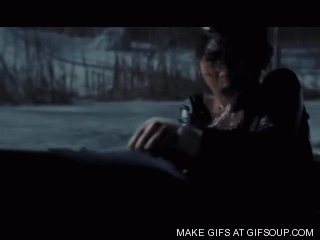Shadow GIF is an innovative form of digital art that combines creativity with technology, captivating audiences worldwide. In recent years, the use of GIFs has skyrocketed, becoming a staple in online communication and social media. As digital artists and marketers explore new ways to engage their audiences, the emergence of shadow GIFs stands out as a unique trend that adds depth and dimension to animated visuals.
In this article, we will delve deep into the world of shadow GIFs, exploring their definition, significance, and the process of creating them. We aim to equip you with the knowledge needed to harness the power of shadow GIFs for your projects, whether for personal use or professional branding. Join us as we navigate through the intricacies of this captivating digital phenomenon.
From understanding the technical aspects to exploring creative applications, this comprehensive guide will cover all you need to know about shadow GIFs. By the end, you'll not only appreciate this art form but also be inspired to create your own animated visuals that stand out in the digital landscape.
Table of Contents
- What is Shadow GIF?
- The History of GIFs
- Why Use Shadow GIFs?
- How to Create Shadow GIFs
- Tools and Software for Shadow GIF Creation
- Applications of Shadow GIFs in Marketing
- Best Practices for Using Shadow GIFs
- Conclusion
What is Shadow GIF?
Shadow GIFs are animated images that incorporate a shadow effect to create depth and a three-dimensional feel. These GIFs are designed to enhance the viewer's experience by adding a layer of visual interest that traditional GIFs may lack. The shadow effect can be created by manipulating the opacity and positioning of the animated elements, resulting in a more engaging visual presentation.
The History of GIFs
The Graphics Interchange Format (GIF) was first introduced in 1987 by CompuServe as a method for sharing images on the internet. Over the years, GIFs have evolved from simple static images to complex animations that are widely used across various platforms. The introduction of shadow GIFs marks a new chapter in the GIF family, showcasing the potential for creativity in digital animations.
Why Use Shadow GIFs?
There are several compelling reasons to incorporate shadow GIFs into your digital content:
- Enhanced Engagement: Shadow GIFs capture attention and encourage viewers to interact with the content.
- Visual Appeal: The added depth from shadow effects makes the GIFs more visually striking.
- Brand Differentiation: Unique shadow GIFs can help brands stand out in a crowded digital marketplace.
How to Create Shadow GIFs
Creating shadow GIFs involves a combination of design skills and technical know-how. Here’s a step-by-step guide to help you get started:
- Conceptualize Your Design: Start with a clear idea of what you want to create.
- Choose Your Colors: Select a color palette that complements the shadow effect.
- Design the Elements: Use software like Adobe Illustrator or Photoshop to create the individual elements of your GIF.
- Add Shadow Effects: Layer your elements and adjust the opacity to create the desired shadow effect.
- Animate Your GIF: Use tools like Adobe After Effects or online GIF makers to bring your design to life.
- Save and Optimize: Export your final design as a GIF and optimize it for web use.
Tools and Software for Shadow GIF Creation
To create stunning shadow GIFs, you can utilize various tools and software:
- Adobe Photoshop: A powerful tool for creating and editing GIFs, allowing for detailed customization.
- Adobe After Effects: Ideal for animating graphics and adding shadow effects.
- Canva: A user-friendly online platform that offers GIF creation tools.
- GIMP: A free alternative to Photoshop that supports GIF creation.
Applications of Shadow GIFs in Marketing
Shadow GIFs have a wide range of applications in marketing, including:
- Social Media Content: Eye-catching shadow GIFs can drive engagement on platforms like Instagram and Twitter.
- Email Marketing: Incorporating shadow GIFs in email campaigns can increase click-through rates.
- Website Animations: Use shadow GIFs on landing pages to enhance user experience and attract visitors.
Best Practices for Using Shadow GIFs
To maximize the impact of shadow GIFs in your content, consider the following best practices:
- Keep It Simple: Avoid overcrowding the GIF with too many elements.
- Optimize for Load Time: Ensure your GIFs are optimized for quick loading to prevent drop-offs.
- Test Across Devices: Check how your shadow GIFs appear on different devices and platforms.
Conclusion
Shadow GIFs represent a fascinating evolution in the realm of digital art, offering a unique way to engage audiences through animated visuals. By understanding the creation process and applications of shadow GIFs, you can leverage this art form to enhance your digital content and marketing strategies.
We invite you to share your thoughts and experiences with shadow GIFs in the comments below. If you found this article helpful, consider sharing it with your friends or exploring more content on our site!
Thank you for reading, and we hope to see you back here soon for more insights into the world of digital creativity.
First National Bank Sioux Falls: A Comprehensive Guide
Jorma Taccone: The Multifaceted Talent Of Comedy And Music
A Deep Dive Into Ana Patrícia: Biography, Career, And Impact


